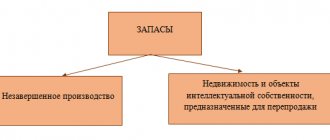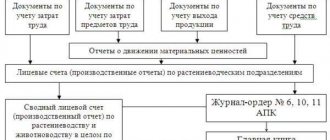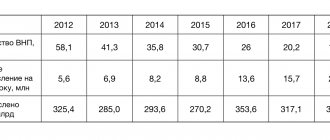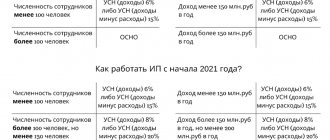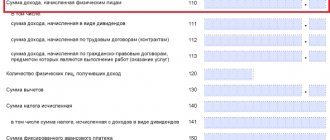New federal standards. FSBU in 2021
New federal accounting standards for the public sector (hereinafter referred to as the Standards) were approved by orders of the Ministry of Finance of the Russian Federation:
- No. 274n dated December 30, 2017 - “Accounting policies, estimates and errors.”
- No. 275n dated December 30, 2017 - “Events after the reporting date.”
- No. 278n dated December 30, 2017 - “Cash Flow Statement”.
- No. 32n dated 02/27/2018 - “Income”.
- No. 122n dated May 30, 2018 - “The impact of changes in foreign currency exchange rates.”
The draft of another Standard “Payments to Personnel” was posted on the official website on December 13, 2021 and has not yet been approved by order of the Ministry of Finance.
The Clerk has a directory with all Federal Accounting Standards for the public sector: there are those that have already entered into force in 2021, 2019 and those that will be applied from 2021.
Impact of changes in foreign exchange rates
Current accounting standards establish that any operation of the economic activity of a subject is reflected in accounting in ruble equivalent. That is, if the transaction was carried out in foreign currency, then the amount must be recalculated. The procedure and rules for recalculation are established by the Federal Accounting Service.
The new standard establishes methods and procedures for recalculating the value of assets and liabilities provided for foreign Russian institutions. The provisions also establish the rules for reflecting this information in the reporting of public sector organizations.
FSBU "Accounting policies, estimates and errors"
The Standard under consideration establishes uniform requirements for the formation, approval and change of accounting policies, as well as rules for reflecting in the financial statements the consequences of changes in accounting policies, estimates and corrections of errors.
The standard discloses such concepts as prospective and retrospective application of the changed accounting policy, estimated value, prospective recognition of the results of changes in the estimated value, retrospective restatement of accounting (financial) statements.
Accounting policies, as now, will be drawn up by institutions independently, based on their structure, industry and other characteristics of their activities. In this case, institutions will also be able to follow the accounting policies of the founder. The composition of the accounting policy must comply with the requirements of clause 9 of the Standard. This paragraph is similar to paragraph 6 of Instruction No. 157, and therefore there is no need to revise the composition of the accounting policy sections.
An estimated value is a calculated or approximately determined value of any indicator necessary for accounting and reflected in the financial statements when there is no exact way to determine it.
Estimated values include:
1. Useful lives of fixed assets and intangible assets.
2. Amounts of estimated reserves.
3. Amounts of depreciation charges.
4. The value of non-financial assets in cases provided for by federal and (or) industry accounting standards for public sector organizations.
5. Other values of the indicator necessary for accounting and (or) reflected in the accounting (financial) statements, calculated or approximately (estimated) determined on the basis of expert opinions (professional judgments) in the absence of an exact method for its determination.
A change in the estimated value cannot be recognized as a change in accounting policy, nor as a correction of an error. It is reflected in the financial statements prospectively. However, changing the method for determining the estimated value is already a change in accounting policy. It should be disclosed in the reporting.
What has changed in the rules for classifying assets as inventories?
Inventories are assets that are “turned over” during a company's average operating cycle , or are used in a period of less than 12 months. The time-related criterion is new; it was not included in the previous rules for working with inventories (PBU 5/01).
As before, inventories include goods, finished products, raw materials, supplies, fuel, and tools.
In addition, several new categories are now included in reserves (clause 3 of FSBU 5/2019):
- Work in progress (WIP), i.e. costs of manufacturing products incurred before the completion of all technological processes or before acceptance of the product. WIP also includes the costs of work and services until they are completed and the certificates are signed by the customers.
- Real estate that an organization has purchased, built (or is building) for resale.
- Intellectual property that an organization has created (or is creating) for resale. These could be, for example, computer programs or works of art.
In order for assets from paragraphs 2 and 3 to be classified as inventories, trading in real estate or intellectual property must be part of the company’s ordinary activities.
In addition, one “specific” category is excluded from inventories - low-value fixed assets (FP). We are talking about fixed assets that cost less than a certain limit established in the organization. Since one of the characteristics of a fixed asset is a useful life of more than 12 months, they now, in principle, cannot be classified as inventories, regardless of cost.
According to the “old” PBU 6/01 “Fixed Assets,” which is still in effect in 2021, this limit can be up to 40 thousand rubles. New fixed assets accounting rules (FSBU 6/2020) allow companies to determine any “threshold” for classifying an asset as fixed assets.
FSBU 6/2020 will be mandatory for use from 2022, but it can be used voluntarily in 2021. However, in any case, fixed assets whose value is below the limit established by the company cannot be classified as inventories from 2021. The cost of acquiring such objects must be immediately written off as expenses (clause 5 of FSBU 6/2020 or clause 3 of FSBU 5/2019).
Reflection of corrections of errors in financial statements
In the accounting policy, the institution must indicate acceptable methods for correcting errors so that inspectors do not have questions about them.
It is not possible to correct already approved and submitted reports. All corrections must be made in the report for the period in which the error was identified. For example, if in the third quarter of 2021 you discover that you incorrectly reflected account turnover in the first quarter of the same year, then corrected reporting will need to be submitted for the third quarter.
Table 1 “Procedure for correcting errors in financial statements”
| Error detection period | Error correction rules |
| Identified during the implementation of internal control after the date of signing the reporting, but before the deadline for its submission. | 1. It is necessary to make an additional account. entry (using the “red reversal” method and additional entry) as of the last reporting date of the reporting period. 2. Clarify reporting. |
| Identified during a desk audit of reporting after the reporting deadline, but before the date of acceptance by the authorized body | 1. It is necessary to make an additional account. entry (using the “red reversal” method and additional entry) at the end of the reporting period. 2. Correct reporting. Specify the basis for correction: decision of the authorized body. |
| Identified during internal and external control and audit after the date of acceptance of the reporting, but before the date of its approval. | 1. It is necessary to make an additional account. entry (using the “red reversal” method and additional entry) at the end of the reporting period. 2. Correct reporting. Specify the basis for correction: decision of the authorized body. |
If an error made when recording transactions in accounting is discovered in the current year, then it is not difficult to correct it; you must be guided by the current rules.
Old mistakes are harder to correct. If the year has ended and the reporting has been approved, then the accounts of the financial result of the current year (401.10 and 401.20) have already been consolidated into account 401.30. During the year, account 401.30 cannot be used to create adjusting entries relating to previous reporting periods.
Depending on the nature and period of the error, corrections must be made using special new invoices.
Table 2 “Fixing old errors”
| Error period | We fix it | ||
| Financial results | Consolidated settlements | Other | |
| Year preceding the reporting year | 401.18 401.28 | 304.84 | 304.86 |
| Earlier years | 401.19 401.29 | 304.94 | 304.96 |
In the explanations to the annual reporting it is necessary to disclose:
- information regarding changes in accounting policies;
- information about changes in the estimated value;
- information about errors from previous years.
Borrowing costs
The adopted accounting changes for 2021 establish uniform rules for recognizing costs for state and municipal debts of public legal entities and borrowings of budgetary and autonomous institutions. General requirements for the disclosure of information about these costs in financial statements have been determined.
The costs of debt obligations of budgetary and autonomous institutions according to the new Federal Accounting Standards are divided as follows:
- interest expenses on long-term liabilities;
- other costs of debt obligations.
Expenses are taken into account separately for each category. Initially, other costs are recognized as deferred expenses - in account 0 401 50 000. Then they are included in capital investments or classified as expenses of the current period.
FSBU "Events after the reporting date"
Events after the reporting date are recognized as facts of the economic life of an institution that:
- have had or may have an impact on the financial condition, cash flow or results of operations of the institution;
- occurred between the reporting date and the date the statements were signed.
The receipt after the reporting date of primary accounting documents for facts of economic life that have already arisen in the reporting period is not an event after the reporting date.
Facts of economic life are recognized in accounting at the time of their occurrence. If these documents were received before the reporting date, it is the institution’s responsibility to register them during the reporting period. The “Events after the reporting date” standard establishes:
- classification of facts of economic life - events after the reporting date;
- rules for reflecting these facts of economic life in accounting;
- rules for disclosing information about events after the reporting date when preparing and presenting reports.
Events after the reporting date, information about which is material, are determined by the institution independently.
Events after the reporting date are divided into two types:
Events confirming the conditions of activity :
- identification of documents confirming that the receivables have signs of being hopeless for collection, if, as of the reporting date, collection measures have already been taken in relation to them (death of the individual debtor or liquidation of the debtor organization);
- completion after the reporting date of the state. registration of property rights initiated in the reporting period;
- change after the reporting date in the cadastral valuation of a non-financial asset.
Events indicating operating conditions recognize:
- making a decision on the reorganization or liquidation of an institution that was not known as of the reporting date;
- significant inflow or outflow of assets from transactions initiated in the reporting period.
Events are reflected in accounting differently depending on the type.
An event confirming the conditions of activity is shown on the last day of the year according to the rules for reflecting error corrections.
An event indicating operating conditions - by making entries in the period following the reporting period.
If the reporting has been submitted but not yet approved, then, by decision of the founder, the detected error can be corrected on the last day of the reporting period.
What has changed in the order of write-off of inventories
The procedure for writing off the cost of inventories in the new standard has not fundamentally changed. Companies, as before, can choose one of three methods:
- Estimate the cost of each unit of inventory separately.
- Write off inventories at average cost.
- Use the FIFO method, i.e. begin to write off inventories at the prices of the assets acquired most recently. In this case, it is conventionally assumed that for production and other purposes, the stocks purchased earlier than others are used first.
There is a new condition for writing off inventories. Now they can be written off not only upon sale or other disposal, but also in the case when the organization decides that economic benefit cannot be expected from a particular type of asset in the future (clause “c” of paragraph 41 of FSBU 5/2019).
FSBU “Cash Flow Statement”
The standard establishes general requirements, terms and methodological basis for the preparation of this report.
The report form and the procedure for filling it out for government institutions (form 0503123) are set out in Instruction No. 191n, for budgetary and autonomous institutions (form 0503723) and the procedure for filling it out is in Instruction No. 33n.
As now, the report will need to be compiled in the context of KOSGU codes based on analytics on the types of receipts and disposals that are reflected in accounting.
Inflows and outflows of cash and cash equivalents are divided into cash flows from operations:
- current;
- investment;
- financial.
Current operations are operations related to the implementation by an institution of the powers or functions assigned to it.
For example, an institution’s cash flows from current operations are recognized as:
- by receipt - income from the use of property in state (municipal) ownership, income from the provision of paid services, including subsidies for the implementation of state or municipal tasks;
- for payment - expenses for wages, for the purchase of goods (work, services) and inventories, for the payment of taxes, fees, and contributions.
The institution's cash flows from investment operations:
- upon receipt - sale of fixed assets, intangible assets, non-produced assets and inventories, repayment of loans provided;
- on disposal - acquisition of fixed assets, intangible assets, non-produced assets and inventories, provision of loans.
Financial transactions are transactions that result in changes in the size and composition of an institution's borrowings.
Cash flows that cannot be clearly classified should be recognized as cash flows from current operations.
Cash flows from different types of transactions must be shown separately from each other in the report. Moreover, if a payment or receipt from one business transaction consists of cash flows from different types of operations, they must also be separated. For example, if the loan repayment and interest payment are made in one amount, then the repayment of the principal debt is reflected as part of cash flows from financial transactions, and interest - as part of current operations.
When generating a report, you must also take into account the following features:
- cash flows must be reflected as net receipts or cash outflows, that is, taking into account returns made in the reporting period;
- The amount of cash flows in foreign currency should be recalculated into rubles on the date of payment or receipt.
What has changed in the valuation of inventories created by the organization itself?
The new standard describes in detail the procedure for assessing inventories that the organization created itself (clauses 23 - 27 FSBU 5/2019). We are talking about finished goods (FP) and work in progress (WIP).
When assessing GP and WIP, one should take into account both direct costs, which can be attributed to specific products, and indirect costs, which are distributed according to the method chosen by the organization.
In mass and serial production, it is allowed to use simplified methods for assessing GP and WIP:
- Only for direct costs, excluding indirect ones.
- Based on planned costs.
For unit production, WIP should be valued only at actual costs.
The new standard separately regulates the procedure for assessing inventories that may “appear” to an organization as a result of dismantling or repairing fixed assets (clause 16 of FSBU 5/2019). In this case, the lesser of two values must be taken as the cost of the received inventory:
- The cost of the same inventory that an entity purchases or creates in the normal course of business.
- The sum of the book value of written-off fixed assets and the costs of dismantling and retrieving material assets suitable for further use.
Rent
If an institution leases property or leases out fixed assets, such transactions must be conducted in accordance with the new federal standard. In order to correctly reflect transactions in accounting, it is necessary to determine which category the lease belongs to: operating (non-financial) or non-operating (financial).
Property received under a non-operational transaction is taken into account as part of the fixed assets of a budgetary institution. At the same time, a monetary liability in the amount of rent payables is also taken into account.
An institution has the right not to apply these rules if a state organization is provided with assets for temporary possession or use. For example, biological or intangible assets for temporary use.
